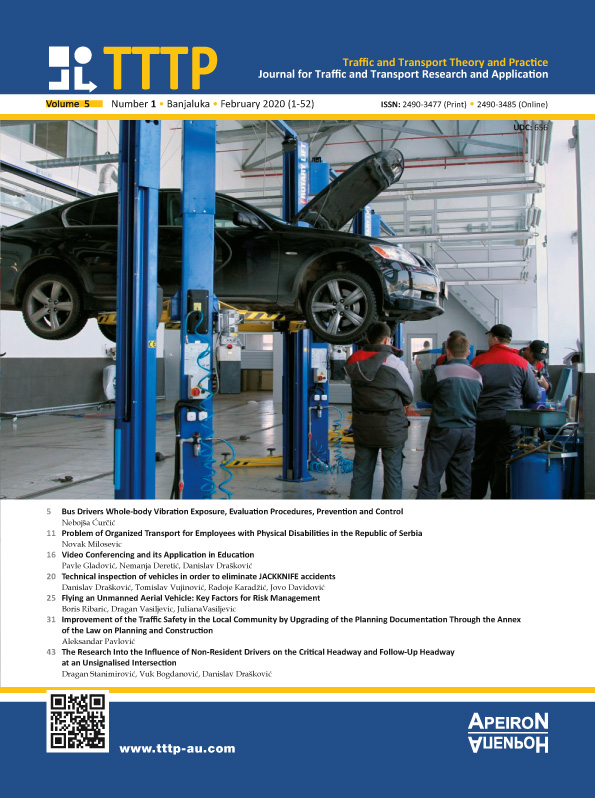The Research Into the Influence of Non-Resident Drivers on the Critical Headway and Follow-Up Headway at an Unsignalised Intersection
DOI:
https://doi.org/10.7251/JTTTP2001016SAbstract
The input parameters in the procedure for calculating the minor movement capacity of the unsignalised intersection are the values of conflict flow, critical haedway and follow-up headway. The conflict flow value is established in exact measuring, on the basis of flow values on approaches and their distribution by driving directions. On the other hand, the values of the critical headway and the follow-up headway are the parameters which depend on the estimate and the behaviour of the drivers doing the minor movement. On account of that, these parameter values depend on different factors and influences, therefore, they are not identical at all intersections. In the procedures for calculating the capacity of two-way stop controlled inersections, the values of critical headway and follow-up headway are given as recommendations. Some of the methods for capacity calculations, such as Highway Capacity Manual, recommend the research on these parameter values in local conditions, considering different influences. This paper presents the results of the research into the influence of non-resident drivers on the features and values of critical headway and follow-up headway, and thereby on the intersection capacity as well.Downloads
Published
2020-03-16
Issue
Section
Чланци
